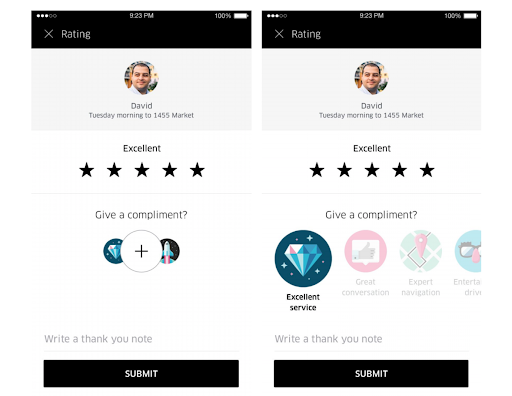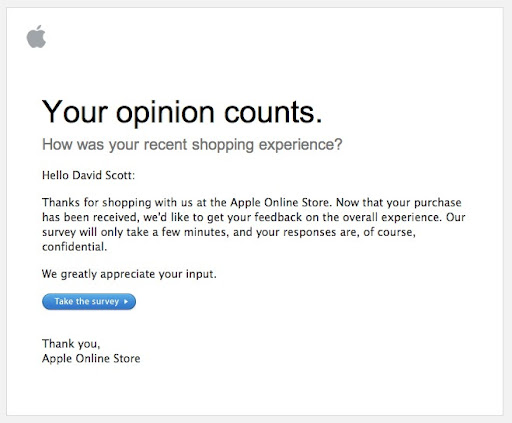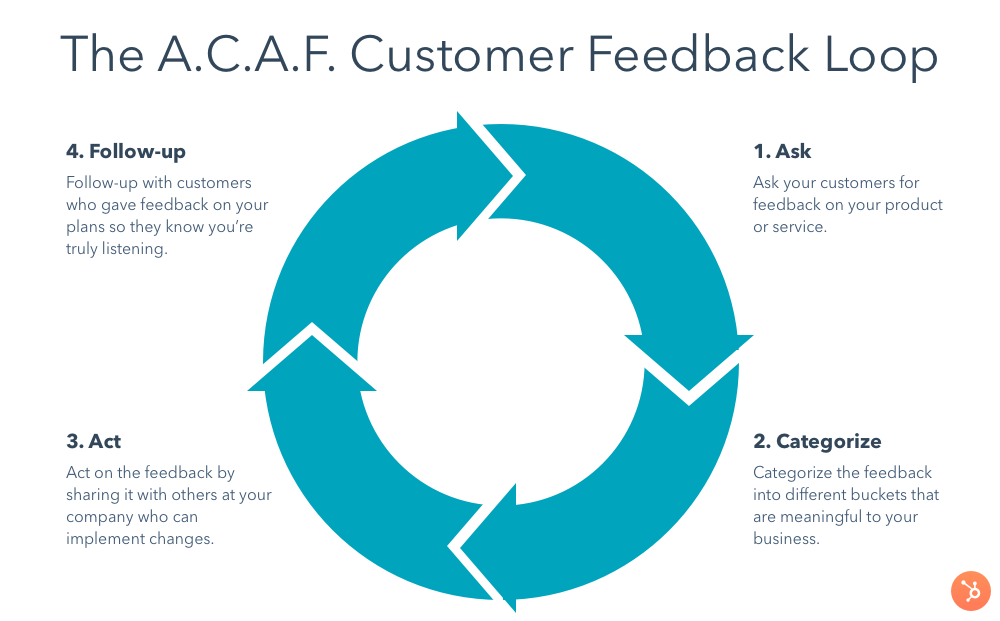The current business landscape dictates that companies must juggle insecure supply chains, multiple communication channels, and increasingly demanding and vocal customers to stay competitive. It’s not enough to simply create an awesome product or service, businesses also need to prioritize the customer experience.

Creating a personalized and responsive customer service environment is a stated priority for nearly 88% of companies. This makes sense, given that 96% of customers report they will stop doing business with a company after a bad customer experience.
In order to reduce pain points and churn, and increase customer satisfaction and sales, companies need to find ways to improve the customer experience. This requires knowing your customers' sentiments, complaints, and insights so that you can identify areas for improvement and allocate the appropriate resources to enact positive change.
To gather the information required to improve the customer experience, businesses must rely on customer feedback management (CFM). CFM enables companies to proactively gather data about customers’ experiences, wants, and suggestions that can be used to streamline service delivery, improve products, and increase customer satisfaction.
By adopting customer feedback software and best practices related to gathering and analyzing types of customer feedback, companies can position themselves to retain more customers and increase brand loyalty amongst their existing customer base.
What is Customer Feedback Management?
Customer feedback management (CFM) is the process of sourcing feedback from customers via multiple channels to guide company decisions and improve the customer experience.
At its core, CFM is a customer-centered approach to doing business that uses customer feedback as a means to deliver a more enjoyable service experience and product.
It’s helpful to visualize customer feedback management as a loop the includes the following steps:
- Ask: solicit customer feedback
- Categorize: sort feedback into separate groups
- Act: share feedback with relevant parties and develop solutions
- Follow-up: follow-up with customers to gauge the effectiveness of your efforts
At each stage of the customer feedback loop, companies utilize customer feedback software and tools to help them gather, organize, analyze, and act upon feedback to generate meaningful change.
The type of feedback collected from customers falls into two distinct categories: direct feedback and indirect feedback, which we’ll discuss below.
Types of Customer Feedback
Direct customer feedback comes from explicit requests that you send to customers, like completing surveys post-purchase or providing reviews. Indirect feedback is given but not asked for, like social media posts, comments, or even product returns.
Additional types of customer feedback include:
- Product or service sales
- Support tickets
- Technical issues and bug reports
- Requests for product or service walkthroughs
- Customer complaints
- Suggestions
With the feedback gathered from CFM, companies can identify key customers, streamline improvements, increase revenue, and develop stronger relationships between their brand and their customers.
Customer feedback management aims not only to find ways to keep customers satisfied but also to turn negative experiences into opportunities for positive engagement. After all, 95% of people admit that they are willing to work with a company after a bad experience if their complaint is resolved.
The Difference Between a Customer Complaint and Customer Feedback
Before we proceed, let’s take a moment to highlight the differences between a customer complaint and customer feedback.
The main differences between the two have to do with when and how the information is given.
A complaint is delivered after a customer experience and is - by definition - exclusively negative. Meanwhile, feedback can be solicited before, during, or after a customer experience and could be bad, good, or neutral, depending on the situation.
Customer complaints originate due to product or service issues, a lack of empathy in interactions with support staff, and delayed or inadequate responses to reviews or appeals for assistance. On the other hand, customer feedback can include praise, suggestions for product improvements, or comments on the effectiveness of a customer service interaction.
Companies need to be sensitive to the power of customer complaints, as rage-filled customers are more vocal than satisfied ones. Customers who have a negative experience with a brand or its representatives tell twice as many people as customers who had a positive experience.
The sad truth is that most customer complaints never get reported, which means that complaints aired publicly represent only the tip of the iceberg. This means that most negative interactions remain under a company's radar, which can delay the process of identifying and implementing solutions and lead to increased churn and lost revenue.
Customer feedback management is designed to reduce the incidence of complaints and also ensure that complaints are dealt with quickly and efficiently. Through this process, companies can mitigate the damage inflicted upon their brand by unhappy customers and find ways to channel negative feedback into innovative solutions.
Why is Customer Feedback Management Important?
Customer feedback management confers multiple benefits, including:
- Reduced churn
- Increased revenue
- Improved products and services
- Stronger customer relationships
- Data about key customer groups
While there is value in acquiring new customers, there is as much value in retaining existing customers. Attracting new customers costs between 5 to 25 times more than keeping current customers happy. Furthermore, a mere 5% increase in customer retention can increase profits from 25% to 95%.
Additionally, customer feedback management is critical to letting customers know that you care about their satisfaction. People leave companies for many reasons, but nearly 68% of customers state they leave because they believe a company doesn’t care about them.
Companies that take the time to listen to customer feedback and institute changes based upon that information communicate their investment in building strong customer relationships. Even after a negative experience, 83% of customers feel increased loyalty to brands that answer and resolve their complaints.
With CFM, companies gain valuable insights to improve products and services that deliver a more enjoyable customer experience. If used correctly, companies can capitalize on this information to outmaneuver their competitors and generate more revenue for less than it costs to focus solely on acquiring new customers.
Customer Feedback Management Channels
Regardless of the industry, there are many ways to solicit feedback to improve the customer experience.
Some of the most common customer feedback management channels include:
- Focus groups
- Customer interviews
- Surveys
- NSA
- Third-party reviews
- Live chat
- Text
- Social media
Traditionally, focus groups and customer interviews formed the backbone of most CFM efforts. Focus groups give companies valuable information about a key demographic’s brand, product, or service reviews. Similarly, customer interviews provide detailed accounts about a specific customer's interactions with a company.
Customer feedback software that uses in-app surveys and net promoter score (NPS) surveys make it easy and affordable for companies to automate CFM. While in-app surveys help provide insight into a specific interaction, NPS surveys are critical for helping businesses to understand how customers feel overall about their brand. Although different software scores their results differently, all NPS surveys measure customers' loyalty to a brand.
Live chat, text, and email remain the most personal, popular, and direct customer feedback management tools. With the increasing digitalization of customer service experiences, people want to be able to communicate with businesses quickly and efficiently when a problem arises. Automating responses and personalizing messaging can help to provide a more engaging feedback process for customers and increase the likelihood of gathering valuable information.
Third-party reviews and social media sites serve as community forums where people air their grievances and discuss their favorite brands. Nearly 51.7% of consumers expect businesses to respond to their complaints within seven days. Finding ways to be proactive on different platforms can help businesses to meet their customers’ service expectations.
Customer Feedback Management Software
As mentioned above, customer feedback management software helps you automate feedback collection, aggregate feedback, and analyze metrics and act on data. Below we’ll recommend some high-quality software tools.
1. Service Hub
HubSpot’s Service Hub features a customer feedback software tool that helps you truly understand customer perception and uncover areas of opportunity for taking action to satisfy your audience.
2. Survicate
Survicate helps you reach customers where they are most engaged and collect feedback that helps you understand their level of satisfaction with your business. You’ll also be able to analyze data within the platform and take actionable steps to improve the customer experience.
SurveyMonkey
SurveyMonkey helps you create and send surveys for different areas of your business (products, customer loyalty, service interactions, etc.) to get information about customer experience.
5 Customer Feedback Management Best Practices
1. Identify Objectives
Before companies begin collecting customer feedback, they first need to identify what information they want to gather.
It’s tempting to collect as much feedback as possible on a wide variety of topics, but that would be unwise. If your feedback queries aren’t highly specific and targeted, all you’ll end up with is random customer data that won’t allow you to identify a pattern.
Effectively run CFM programs allow companies to recognize patterns regarding product flaws, customer service issues, and unmet expectations. This data helps CX teams create a roadmap that details where problems exist in the delivery, use, and reception of your products and services.
Determine what information you want to collect, whether for the overall customer experience, a particular interaction, or a specific product or service. Only ask for feedback when necessary, and tailor your process to match your objectives.
Over time, additional client feedback can be used to fine-tune objectives and to make them more relevant to your business goals.
2. Gather Feedback Using Multiple Channels
Whether you’re a consumer or business, there’s no such thing as one size fits all. This rule also applies to customer feedback management, as no one type of customer feedback is sufficient to collect all of the data to make informed adjustments to the CX design.
From interviews to in-app surveys and emails to NPS, businesses have myriad options to choose from when it comes to building a comprehensive CFM program. By tailoring channels to collect certain types of information, businesses can gather more valuable information than if they only used one channel.
Additionally, it’s more efficient to tailor multiple channels to accomplish a few tasks than to try and adapt one channel to meet every objective.
At this stage, deploying multiple channels to collect and respond to customer feedback is not simply a luxury but an actual requirement for any aspiring online business. Remember, 90% of customers expect companies to maintain consistent interactions across multiple channels.
3. Sort Feedback into Categories
There are many types of customer feedback, from product and service reviews to support feedback that describes a specific experience or interaction. Trying to view all of this data at once is a surefire way to slow down your CFM process and fail to enact meaningful change.
Once companies solicit feedback, the next step should be to organize the feedback into relevant categories. By grouping feedback into categories, companies can begin to analyze the data to see what patterns emerge.
As a general rule, businesses should avoid mixing qualitative data with quantitative data. That said, there are times when quantitative data can shed light on qualitative data or fill in the gaps in the CX narrative.
4. Act Upon Customer Feedback
Collecting customer feedback is pointless if you don’t do anything with it. It makes no sense to collect feedback only to shelve it for a rainy day. Not only will you waste time and money on collecting the data, but your customers will also be left wondering whether you care about them.
Prioritize addressing the most critical concerns that are directly impacting the user experience and your bottom line. From there, you can then tackle the more ubiquitous but less pressing concerns voiced by the majority of your customers.
When possible, look for opportunities to make quick, minor adjustments to reduce existing pain points for easy victories. A quick and efficient response lets your customers know that you’re responsive to their feedback and take their concerns seriously.
5. Track and Follow-up on Results
Just because you’ve adopted a CFM program and are acting upon feedback to enact changes to your business doesn’t mean that your job is done. Don’t forget the customer feedback loop from earlier; CFM is an ongoing process that can ignite radical change in the way a company does business.
The process of creative destruction never stops, and those businesses that continue to find ways to innovate and are responsive to the demands of consumers are usually the ones that stick around for more than a single business cycle.
After instituting customer feedback to improve products and services or the customer experience, businesses still need to follow up with customers to monitor their reactions to the changes. Personalized responses demonstrate a company’s commitment to the CFM process and enable companies to gather additional feedback.
Depending on the response, companies may need to make further adjustments or identify new objectives for the CFM process to solve. Regardless, it's imperative to keep the door open for new feedback to keep the cycle of innovation and growth operating at maximum capacity.
3 Examples of Customer Feedback Management
1. Uber
Ridesharing startup Uber has made measurement-based customer feedback a core part of their CX design.
After each trip, users can use in-app surveys to rate their driver between 1 to 5 stars and choose from several preset categories to explain their rating. If a driver went above and beyond to deliver an exceptional customer experience, customers are encouraged to give a specific compliment about the driver’s service, manner, or navigation.

While limited in scope, Uber’s CFM process allows it to identify problem drivers and take corrective action quickly. This enables Uber to maintain the quality of its driver base and reduce the likelihood that a user has a negative experience.
2. Zappos
E-commerce giant Zappos is well-known for responsive and helpful customer service. The online shoe retailer makes it easy to get in touch by offering 24/7 chat, text, and phone service.
By keeping multiple lines of communication open both day and night, Zappos ensures that it can nip problems in the bud before they escalate into full-blown complaints. This helps the retailer to distinguish itself from its competitors through its commitment to providing a smooth customer feedback experience.

Unlike many companies, which simply react to customers’ complaints, Zappos is proactive in its pursuit to provide quality customer service. Its commitment to free delivery and returns for 365 days demonstrate its willingness to innovate based on customer feedback, which in turn has ensured that the company enjoys a dedicated following even in the crowded online retail marketplace.
3. Apple
Few companies took product and service innovation more seriously than Apple. Over the years, the tech giant has built up a rabid fan base, largely because it knows what its customers want.
Apple consistently ranks highly in customer satisfaction surveys because it has developed a reputation for always seeking and employing customer feedback. After every purchase, Apple sends the buyer an email to gather feedback related to the sale.

Additionally, Apple relies on NPS surveys to measure customer satisfaction related to products, services, and in-store and online shopping experiences. It then uses these scores to tailor features for new products to satisfy the widest number of consumers and fuel additional sales and brand loyalty.
How to Get Started Using Customer Feedback Management
Customer feedback management is as much a strategy as it is an entire way of doing business.
Companies that effectively implement a CFM program dedicate themselves to providing an excellent customer experience and set themselves up for future innovations thanks to the cyclical nature of the customer feedback loop.
To get started using customer feedback management, businesses need to get every employee on board. CFM requires a company’s culture to be client-centric and service-oriented, which requires buy-in from everyone from the CEO to the customer support staff answering phones, live chats, and emails.
From there, companies can work CFM into their CX design and create a roadmap for what they want to accomplish. By leveraging customer feedback software, businesses can automate certain tasks and gather valuable quantitative and qualitative data to help them analyze patterns and identify common pain points.
At that point, the only thing left is to make sure to act upon the feedback and follow-up to see if the response was sufficient.
Customer feedback management is a key component to establishing a healthy workplace culture that values customer input. An effective CFM process can mean the difference between losing customers to a competitor and setting your company up for a long and prosperous future.





![How AI Image Misuse Made a World of Miscommunication [Willy's Chocolate Experience]](https://blog.hubspot.com/hubfs/ai%20image%20misuse%20the%20willy%20wonka%20experience%20%281%29.png)


![How Customer Experience Has Evolved Over the Last Decade [+ 2024 Trends]](https://blog.hubspot.com/hubfs/future-of-customer-experience.png)
![Memorable Examples of AR in Customer Experience [+Tips for Implementing the Technology]](https://blog.hubspot.com/hubfs/augmented%20reality%20customer%20experience.png)

![How to Implement a Hybrid Customer Service Strategy That Works [Expert Tips]](https://blog.hubspot.com/hubfs/hybrid%20customer%20service_featured.png)


![Customer Experience vs. User Experience: What’s the Difference? [+ Examples]](https://blog.hubspot.com/hubfs/customer-experience-vs-user-experience_2.webp)